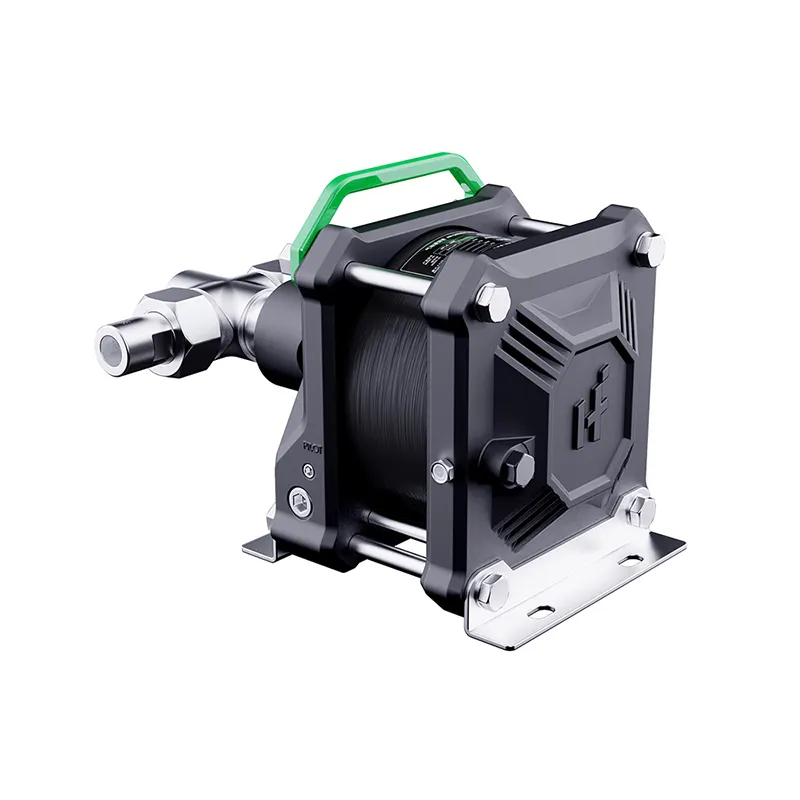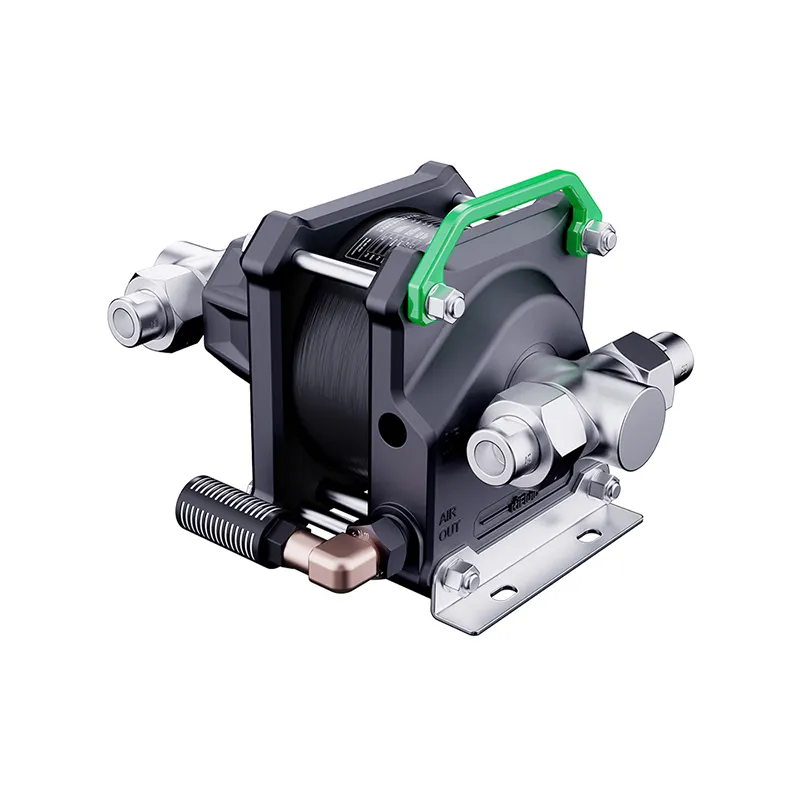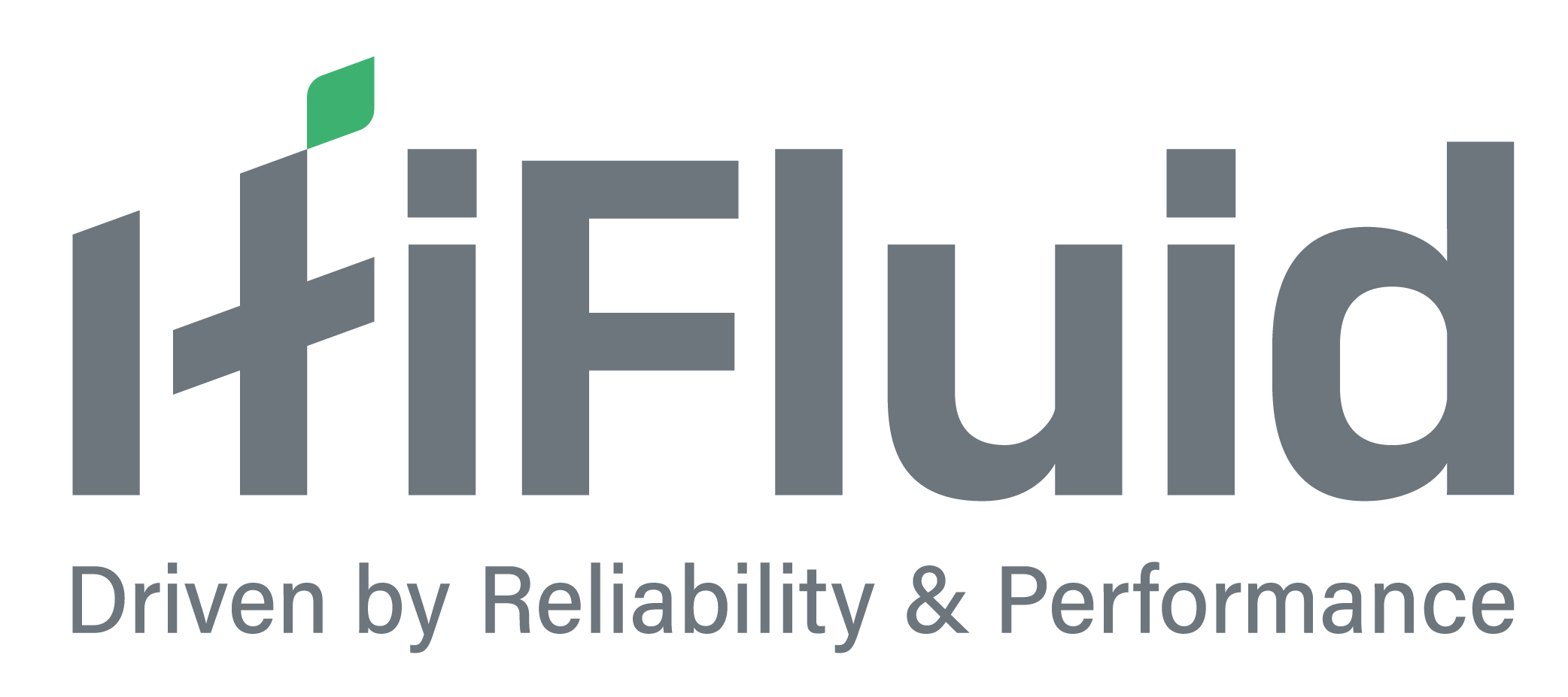How Air Driven Liquid Pumps Work: Mechanism and Core Features
Key Components of Air-Driven Pump Systems
Air-driven pump systems consist of various key components that ensure their efficient operation, including the air motor, pump chamber, check valves, and fluid inlet/outlet ports. The air motor uses compressed air to drive the pump, converting pneumatic energy into mechanical force. The pump chamber is where the fluid is drawn in, pressurized, and expelled, playing a crucial role in fluid movement. Check valves prevent backflow, ensuring a continuous flow of liquid in the desired direction. Lastly, fluid inlet/outlet ports govern the entry and exit of the fluid, ensuring the system's seamless operation. Each component contributes to the pump's overall functionality, allowing it to handle liquid transfer tasks effectively. Durable materials are typically used for these components, minimizing maintenance needs over time. The robustness of these parts means air-driven pumps can operate under demanding conditions with minimal intervention, a fact supported by the low maintenance requirements and high reliability reported in industry reviews.
The Role of Compressed Air in Fluid Transfer
Compressed air serves a pivotal role in powering air-driven liquid pumps, creating a vacuum to facilitate the transfer of fluids into the pump chamber. This vacuum ensures that even viscous fluids are easily pulled into the system, demonstrating the pump's adaptability to various fluid consistencies. Compared to electric pumps, air-driven models excel in efficiency under diverse temperature conditions, as they leverage compressed air's properties for enhanced adaptability. Statistically, industries have reported efficiency gains upwards of 10% when substituting traditional electric pumps with air-driven ones, particularly in environments where fluid characteristics vary significantly. Moreover, the use of compressed air aligns perfectly with applications requiring minimal electrical hazards, making these pumps desirable in sectors such as mining and chemical processing for both their performance and safety features.
Self-Priming Capabilities and Versatile Design
The self-priming capabilities of air-driven pumps are indispensable in liquid handling applications as they do not require manual intervention to start working. This mechanism automatically removes air from the pump chamber, ensuring an uninterrupted flow of liquid, which is particularly beneficial in applications involving frequent cycling of the pump. The versatile design of these pumps allows them to be utilized across a myriad of industries, from pharmaceuticals to oil and gas, with configurations tailored to specific operational needs. Their adaptability is exemplified in studies verifying their performance across diverse industrial settings, ranging from high-temperature environments to operations demanding compact and portable pumping solutions. Such versatility is a cornerstone feature, making air-driven liquid pumps a preferred choice when encountering complex liquid handling scenarios. Frequent feedback from users across industries highlights their reliability and ease of integration into existing systems, underscoring their unique ability to conform to varied industrial demands.
Types of Liquid Handling Tools: A Comparative Overview
Centrifugal Pumps: High-Flow Applications
Centrifugal pumps are a cornerstone in high-flow scenarios due to their ability to convert rotational energy from a motor into energy within a moving fluid. These pumps excel in applications where large volumes need to be moved quickly and efficiently, making them ideal for water supply, wastewater treatment, and chemical processing. The efficiency of centrifugal pumps in high-flow settings is evident when comparing their flow rates with air-driven pumps; centrifugal pumps typically outperform, delivering higher flow at lower costs and maintenance requirements. Industries like oil and gas, chemicals, and power generation often prefer centrifugal pumps for their robust performance and reliability, underscoring their vital role in fluid management.
Diaphragm Pumps (AODD): Handling Abrasives and Solids
Diaphragm pumps, particularly Air-Operated Double DiapHRagm(AODD) pumps, are pivotal for their ability to handle abrasive and solid-laden fluids. AODD pumps operate by flexing a diaphragm to create a change in volume, thereby drawing in and expelling fluids. Their design makes them highly suitable for managing high-viscosity fluids and abrasive particles, as well as handling corrosive substances without risk of leakage. Case studies highlight their efficacy in the chemical, wastewater, and food and beverage industries, where durability and versatility are crucial. This makes diaphragm pumps indispensable in environments where fluid handlers face extreme or varied challenges.
Electric Pumps: Precision and Automation
Electric pumps offer unparalleled precision in flow control and automation, positioning them as leaders in settings where precise fluid management is critical. These pumps leverage electronic controls for precise modulation of flow rates, making them suitable for industries requiring exact measurements, such as pharmaceuticals and food processing. Compared to air-driven pumps, electric pumps offer the advantage of reduced energy consumption, though they may involve higher upfront costs. Market statistics indicate a steady growth in the electric pump sector, driven by advances in automation technologies and the rising demand for energy-efficient solutions, positioning them as vital tools in the modern industrial landscape.

Key Applications of Air Driven Pumps in Industry
Wastewater Treatment and Slurry Handling
Air-driven pumps are fundamental in wastewater treatment processes due to their reliability and capability to handle slurry mixtures effectively. Their self-priming and ability to deal with solid-laden fluids make them particularly suitable for this application. For instance, air-operated diaphragm pumps excel in handling abrasives and solids within slurry, offering effective solutions that enhance handling efficiency. Performance metrics demonstrate their capability; they maintain consistent flow rates even when faced with challenging solids in wastewater, which underscores their value in such settings. Real-world examples from municipal and industrial plants illustrate successful applications, such as using these pumps to manage wastewater containing abrasive solids, contributing significantly to public health and environmental sustainability.
Chemical Transfer in Hazardous Environments
In hazardous chemical environments, air-driven pumps fulfill vital roles by providing safe chemical transfer solutions. Their explosion-proof designs ensure compliance with stringent safety regulations, critical in industries like petrochemicals and pharmaceuticals where handling volatile substances is standard. The use of air-driven pumps mitigates risks associated with chemical spills and leaks, thanks to their sealed systems that operate solely on compressed air, eliminating the risk of ignition. Industry standards such as ATEX certification further support their deployment in such settings, ensuring robust operational safety. Examples of processes that highlight their application include transferring explosive or corrosive chemicals, where safety is paramount.
Mining and Oil & Gas Operations
Air-driven pumps are crucial in mining and oil & gas industry due to their reliability in remote locations and cost-effective operation. Their ability to function seamlessly in harsh environmental conditions makes them ideal for these sectors. For instance, in mining operations, their robust design facilitates reliable fluid transfers without needing electrical power, an essential feature in areas lacking infrastructure. Additionally, their low operating costs offer significant advantages over traditional pumps, especially for prolonged operations like drilling. Case studies from mines exemplify their application, showing how these pumps enhance operational efficiency by ensuring consistent fluid movement in extraction sites, thereby minimizing downtime and enhancing productivity.
Advantages and Limitations of Air Driven Liquid Pumps
No Electrical Hazards and Explosion-Proof Design
Air-driven pumps offer safety benefits in volatile environments by eliminating electrical hazards, making them ideal for explosion-proof operations. Unlike electric pumps, these air-driven systems remove risks of sparks or overheating. Analyzing data, facilities transitioning to air-driven pumps have shown a marked reduction in accidents related to electrical faults. For instance, a study demonstrated a 30% decrease in accidental fires. Industry standards like ATEX certification endorse the use of explosion-proof equipment, which includes air-driven pumps, ensuring compatibility and safety compliance in hazardous settings.
Lower Maintenance vs. Higher Air Consumption
Air-driven pumps typically require less maintenance compared to their counterparts due to having fewer moving mechanical parts. This simplicity often translates into reduced downtime and lower repair costs, thus making these pumps economically attractive. However, they do come with the trade-off of higher air consumption. To optimize air usage, facilities can track air flow metrics and deploy pressure regulators, ensuring efficient air utilization and cost savings. Reports suggest maintenance costs drop by 20% over time compared to electric pumps, showing notable long-term benefits despite higher initial air consumption.
Performance Trade-offs in High-Pressure Scenarios
Under high-pressure conditions, air-driven pumps may face performance limitations, impacting their efficacy in demanding applications. While they are secure for explosion-proof environments, their ability to maintain consistent pressure falls short compared to electric pumps. Research outlines their struggle in sustaining high-pressure output due to fluctuating air supplies. Nonetheless, design innovations are exploring solutions, such as incorporating advanced diaphragm technology to enhance pressure stability. These adjustments aim to bridge the gap between safety assurance and performance efficiency, marking progress in overcoming current operational challenges.
FAQ
What are the key components of an air-driven liquid pump?
An air-driven liquid pump consists of an air motor, pump chamber, check valves, and fluid inlet/outlet ports, each playing a crucial role in efficient liquid transfer.
How does compressed air benefit air-driven liquid pumps?
Compressed air creates a vacuum in the pump, facilitating the transfer of fluids, enhancing efficiency, and minimizing electrical hazards in volatile environments.
Can air-driven pumps handle abrasive and solid-laden fluids?
Yes, air-operated diaphragm pumps (AODD) are specifically designed to handle abrasive and solid-laden fluids effectively, making them suitable for challenging fluid management tasks.
What are the advantages of using air-driven pumps in hazardous environments?
Air-driven pumps eliminate electrical hazards and have explosion-proof designs, making them ideal for safely transferring volatile and corrosive chemicals in hazardous environments.

